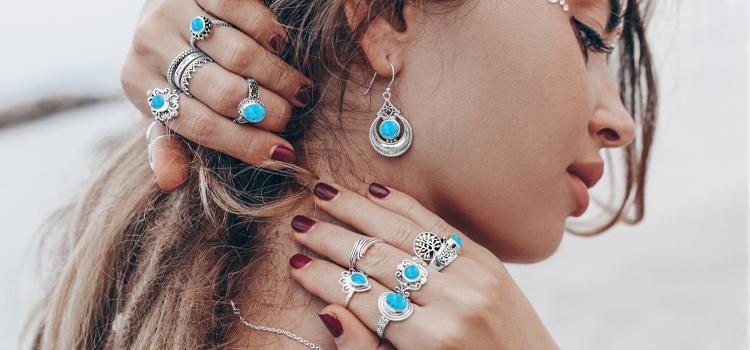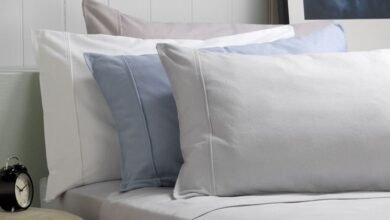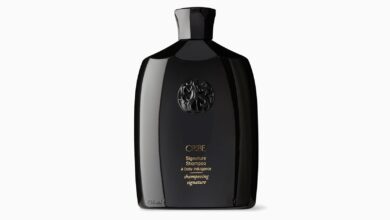Your Definitive Guide To Turquoise Gemstone

Turquoise is an opaque gemstone that not only symbolizes extraordinary beauty and brilliance but also great happiness, wealth, peace and protection.
Being one of the oldest and finest gemstones known to mankind, Turquoise Jewelry Wholesale currently offers an extensive range of Turquoise Jewelry that adds beauty and elegance to the wearer with its commendable designs, unique features, and attractive colors. Shades ranging from blue to green.
From those sparkling turquoise rings to shiny turquoise necklaces that exude glamor and sparkle, to those divine turquoise pendants, people can’t help but flaunt their beauty after adorning themselves with turquoise jewelry.
Despite its uniqueness, the wholesale turquoise gemstone jewelry market is rife with scammers who exploit customers by selling them counterfeit or poor-quality turquoise. Due to a lack of awareness and knowledge, customers cannot happily choose the real best turquoise and get ripped off by many full gemstone manufacturers and retailers.
How are faux turquoise jewels made?
The most famous substitute for true turquoise is garnet, a soft mineral that is picked out in turquoise form and then colored to fool customers. Other materials used for this purpose are plastics, epoxies, magnesite and resins.
Some wholesale gemstone manufacturers also use the turquoise reconstruction method. This usually involves mixing a small amount of real turquoise with another fake gemstone to create fake or poor-quality turquoise jewelry and ornaments, such as turquoise pendants, turquoise gemstone ring, and turquoise necklaces.
In most cases, 100% genuine turquoise feels cool, as opposed to the warm feeling of fake turquoise to the touch.
Due to its wide variety of colors and lack of consistency, identifying fake and poor-quality turquoise is not everyone’s cup of tea.
Check out the ultimate guide before you buy your turquoise jewelry.
Real Turquoise Jewelry Is Expensive
Turquoise jewelry is very rare and expensive, so the exorbitant prices are very justified. So, if someone offers you cheap turquoise, that’s a clear red flag.
Authentic high-quality turquoise is usually between $1,000 and $1,500.
Medium-quality turquoise can be relatively low on the pay scale but is still much more expensive than counterfeit or poor-quality turquoise.
Well, the high price the wearer pays for turquoise jewelry is a one-time investment, as real turquoise will continue to sparkle and reflect for years to come.
Therefore, in any retail or wholesale market for turquoise jewelry, do not make “affordability” a consideration when choosing genuine turquoise.
If you want to fully understand the different prices of turquoise, consider talking to the entire gemstone manufacturer. Just make sure it’s genuine and not a scam!
Also Read:- Ultimate Red Coral Guide: Who, Why & How to Wear Moonga?
Genuine Turquoise Jewelry Appearance Factors
For those who are first entering the jewelry market for turquoise gemstones, it can be difficult for a novice to tell fake turquoise from real turquoise by depending on its appearance. So, to make it easier for you, here’s a checklist to guide you in choosing the real thing.
Weight
As a natural gemstone, real turquoise can feel heavy in the hand. Even a small turquoise ring can have some weight. A poor quality or turquoise reproduction will be very light in comparison, as alternative materials such as plastic or glass will weigh less.
Cracks In The Stone
Real turquoise will have cracks in the surface which can be felt by touch. But if the turquoise is fake or dyed, the cracks in the fake material will be filled with the dye used to replicate the turquoise substitute material.
Pattern
The crack pattern on the surface of turquoise occurs naturally. Therefore, real turquoise will have a vein-like structure in the form of cracks in a “non-repeating pattern”. Faux turquoise will have a uniform pattern.
White spots
Turquoise does not naturally appear white on the surface. It is a sign of colored garnet or marcasite during manufacture. So next time don’t be tempted by the pretty white spots on a turquoise pendant or any other ornament.
Imperfect texture
True turquoise will never have a smooth, even surface. There will always be imperfections in its finish and color combination. Also, real turquoise jewelry is always slightly translucent and not opaque. Keep all of these points in mind when looking for genuine, quality turquoise in the wholesale turquoise jewelry market or any retail store.
Read more – 5 facts about citrine gemstone
Some Common Tests To Identify Authentic Turquoise Jewelry
- Scratch test: Take a small knife and try to lightly scrape the bottom of the turquoise surface. If it scratches easily, it’s a fake. Because real turquoise is always harder, not soft.
- Breath Test: Try exhaling on a turquoise surface. If correct, you can see fog building up on the surface. The fake does not fog up from the same activity.
- Floating test: Due to its high weight, real turquoise always sinks in water, while fake one’s float.
- Hot Needle Test: Take a needle and heat it. Now press it against the turquoise surface in question and leave it intact. If it is a counterfeit substitute like plastic, it will start to melt and the scam will be caught by the gemstone wholesaler or retailer.
At last the conclusion is
The turquoise jewelry market is full of scammers. Unfortunately, they make a lot of money from this unfair practice.
But the good news is that identifying a real turquoise gemstone isn’t that hard if we can be a little smart and quick to notice some small and big differences. Alternatively, if you are unsure if you can detect fake turquoise, it is best to purchase your turquoise from a reliable and reputable wholesale gemstone manufacturer.





